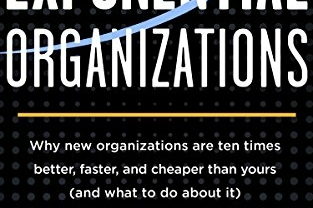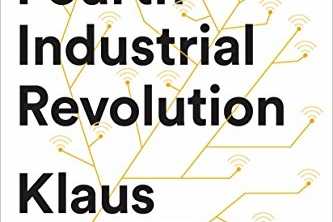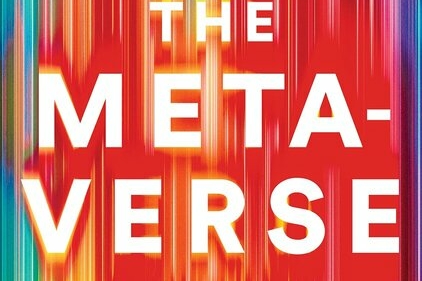In The Design of Everyday Things, cognitive scientist and usability engineer Donald Norman provides a guide to human-centred design and argues that usability is just as important as aesthetics. The book covers everyday things, focusing on the interplay between technology and people to ensure that the products actually fulfill human needs while being understandable and usable.
The author focused on the following area of design: industrial design, interaction design, and experience design.
- Industrial Design: form and material
- Interactive Design: Understandability and Usability
- Experience Design: Emotional Impact
The core theme of the book is Human-centered design which is essential for the design of everyday things.
“Design is concerned with how things work, how they are controlled, and the nature of the interaction between people and technology. When done well, the results are brilliant, pleasurable products. When done badly, the products are unusable, leading to great frustration and irritation. Or they might be usable, but force us to behave the way the product wishes rather than as we wish.”
Human-Centred Design
An approach that puts human needs, capabilities, and behavior first, then designs to accommodate those needs, capabilities, and ways of behaving. Human-centered design is a design philosophy. It means starting with a good understanding of people and the needs that the design is intended to meet. This understanding comes about primarily through observation, for people themselves are often unaware of their true needs, even unaware of the difficulties they are encountering.
“The philosophy and procedures of HCD add deep consideration and study of human needs to the design process, whatever the product or service, whatever the major focus.”
Good design starts with an understanding of psychology and technology. Good design requires good communication, especially from machine to person, indicating what actions are possible, what is happening, and what is about to happen.
Industrial Design
The professional service of creating and developing concepts and specifications that optimize the function, value, and appearance of products and systems for the mutual benefit of both user and manufacturer (Industrial Design Society of America’s)
Interaction Design
The focus is upon how people interact with technology. The goal is to enhance people’s understanding of what can be done, what is happening, and what has just occurred. Interaction design draws upon principles of psychology, design, art, and emotion to ensure a positive, enjoyable experience.
Experience Design
The practice of designing products, processes, services, events, and environments with a focus placed on the quality and enjoyment of the total experience.
Engineers – Logical Thinking
“Engineers, moreover, make the mistake of thinking that logical explanation is sufficient: “If only people would read the instructions,” they say, “everything would be all right.”
Engineers are trained to think logically. As a result, they come to believe that all people must think this way, and they design their machines accordingly. When people have trouble, the engineers are upset, but often for the wrong reason. “What are these people doing?” they will wonder. “Why are they doing that?” The problem with the designs of most engineers is that they are too logical. We have to accept human behavior the way it is, not the way we would wish it to be.”
The best products do not always succeed. Brilliant new technologies might take decades to become accepted. To understand products, it is not enough to understand design or technology: it is critical to understand business.
Discoverability and Understanding
Two of the most important characteristics of good design are discoverability and understanding.
- Discoverability: Is it possible to even figure out what actions are possible and where and how to perform them?
- Understanding: What does it all mean? How is the product supposed to be used? What do all the different controls and settings mean?
Signifiers and Affordance
Affordances define what actions are possible. Signifiers specify how people discover those possibilities: signifiers are signs, perceptible signals of what can be done. Signifiers are of far more importance to designers than are affordances.
Great designers produce pleasurable experiences.
Experience is critical, for it determines how fondly people remember their interactions. Was the overall experience positive, or was it frustrating and confusing? When our home technology behaves in an uninterpretable fashion we can become confused, frustrated, and even angry—all strong negative emotions.
When there is understanding it can lead to a feeling of control, of mastery, and of satisfaction or even pride—all strong positive emotions. Cognition and emotion are tightly intertwined, which means that the designers must design with both in mind.
Discoverability
Discoverability results from appropriate application of five fundamental psychological concepts:
- Affordances, signifiers, constraints, mappings, and feedback
Affordances
The term affordance refers to the relationship between a physical object and a person (or for that matter, any interacting agent, whether animal or human, or even machines and robots). An affordance is a relationship between the properties of an object and the capabilities of the agent that determine just how the object could possibly be used. “A chair affords (“is for”) support and, therefore, affords sitting.”
Affordance is not a property. An affordance is a relationship. Whether an affordance exists depends upon the properties of both the object and the agent.
Signifiers
Signifier refers to any mark or sound, any perceivable indicator that communicates appropriate behavior to a person.
Signifiers can be deliberate and intentional, such as the sign PUSH on a door, but they may also be accidental and unintentional, such as our use of the visible trail made by previous people walking through a field or over a snow-covered terrain to determine the best path. Or how we might use the presence or absence of people waiting at a train station to determine whether we have missed the train.
“Affordances determine what actions are possible. Signifiers communicate where the action should take place. We need both.”
Whatever their nature, planned or accidental, signifiers provide valuable clues as to the nature of the world and of social activities.
In design, signifiers are more important than affordances, for they communicate how to use the design. A signifier can be words, a graphical illustration, or just a device whose perceived affordances are unambiguous. Creative designers incorporate the signifying part of the design into a cohesive experience. For the most part, designers can focus upon signifiers.
Mapping
Mapping is a technical term, borrowed from mathematics, meaning the relationship between the elements of two sets of things.
A device is easy to use when the set of possible actions is visible, when the controls and displays exploit natural mappings. The principles are simple but rarely incorporated into design. Good design takes care, planning, thought, and an understanding of how people behave.
Feedback
Feedback—communicating the results of an action—is a well-known concept from the science of control and information theory.
Feedback has to be planned. All actions need to be confirmed, but in a manner that is unobtrusive. Feedback must also be prioritized, so that unimportant information is presented in an unobtrusive fashion, but important signals are presented in a way that does capture attention. When there are major emergencies, then even important signals have to be prioritized.
CONCEPTUAL MODELS
A conceptual model is an explanation, usually highly simplified, of how something works. It doesn’t have to be complete or even accurate as long as it is useful. The files, folders, and icons you see displayed on a computer screen help people create the conceptual model of documents and folders inside the computer, or of apps or applications residing on the screen, waiting to be summoned.
“Simplified models are valuable only as long as the assumptions that support them hold true.”
The Two Gulfs
When people use something, they face two gulfs: the Gulf of Execution, where they try to figure out how it operates, and the Gulf of Evaluation, where they try to figure out what happened.
The Seven Stages of Action: Seven Fundamental Design Principles
- What do I want to accomplish?
- What are the alternative action sequences?
- What action can I do now?
- How do I do it?
- What happened?
- What does it mean?
- Is this okay? Have I accomplished my goal?
The insights from the seven stages of action lead us to seven fundamental principles of design:
- Discoverability. It is possible to determine what actions are possible and the current state of the device.
- Feedback. There is full and continuous information about the results of actions and the current state of the product or service. After an action has been executed, it is easy to determine the new state.
- Conceptual model. The design projects all the information needed to create a good conceptual model of the system, leading to understanding and a feeling of control. The conceptual model enhances both discoverability and evaluation of results.
- Affordances. The proper affordances exist to make the desired actions possible.
- Signifiers. Effective use of signifiers ensures discoverability and that the feedback is well communicated and intelligible.
- Mappings. The relationship between controls and their actions follows the principles of good mapping, enhanced as much as possible through spatial layout and temporal contiguity.
- Constraints. Providing physical, logical, semantic, and cultural constraints guides actions and eases interpretation.
Good design requires consideration of the entire system to ensure that the requirements, intentions, and desires at each stage are faithfully understood and respected at all the other stages.
What appears good in principle can sometimes fail when introduced to the world. Sometimes, bad products succeed and good products fail. The world is complex.
Need help with developing a digital strategy for your business? Get in touch.


